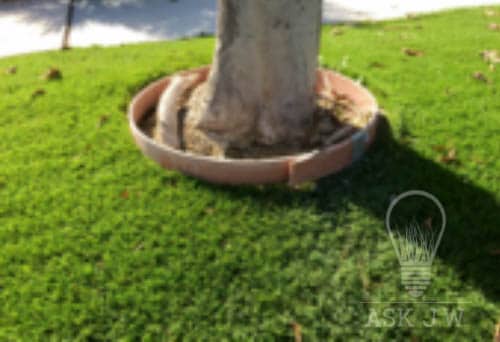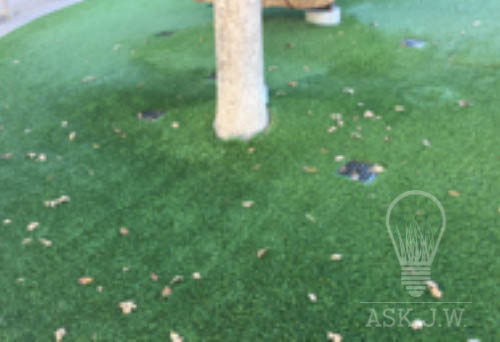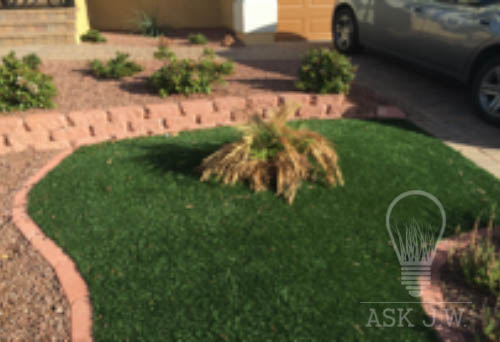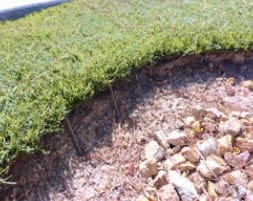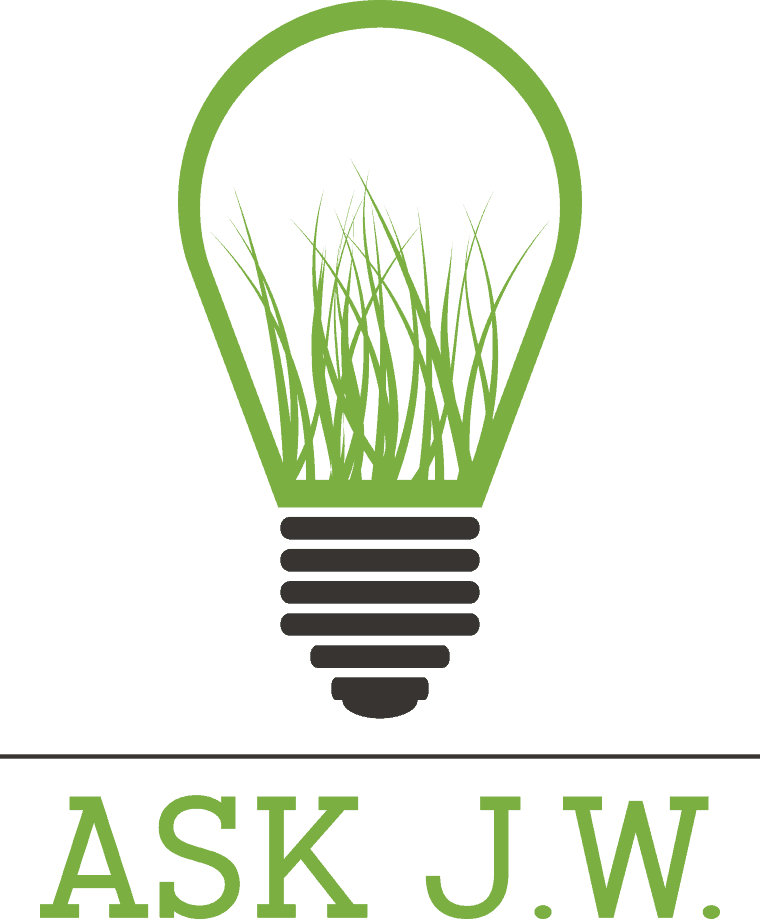
“Your Turf Installation Will Survive for Years to Come, But Will the Trees, Plants, and Shrubs Within Your Installation?”
A basic understanding of a root system’s structure is critical. Trees, plants and shrubs depend on a consistent supply of water, oxygen, and nutrients for survival.
This month I will explain why encapsulating trees, plants and shrubs with synthetic turf will not only put the vegetation in a health risk, but the repairs and replacement can also be costly.
Contractors must understand the liabilities of all surrounding areas within their installation, in addition to the synthetic turf area. Installing synthetic turf against the base (crown/flair) of trees, plants and bushes without regard for the surrounding vegetation will only create unhappy customers.
Terms to Remember:
- Tree– A perennial plant with an elongated stem, or trunk, supporting branches and leaves in most species.
- Shrubs– A shrub is a small to medium-sized woody plant.
- Plants – Any of various photosynthetic, eukaryotic, multi-cellular organisms characteristically containing chloroplasts, having cell walls made of cellulose, producing embryos, and lacking the power of locomotion. Plants include trees, bushes, herbs, ferns, mosses, and certain green algae.
- Tree (Circle) Well– The primary purpose of a diameter(circle)constructed well is to retain moisture for re growth and to prevent the tree from certain causes of death due to the raising and lowering of elevation of soils surrounding the tree.
- Encapsulating– To surround or close off on all sides
- Crown/Flair– The root flare area (also called the crown or root collar) is that area where the main stem tissue transitions to root tissue.
- Roots– The roots of a tree serve to anchor it to the ground and gather water and nutrients to transfer to all parts of the tree. They are also used for reproduction, defense, survival, energy storage and many other purposes
- Canopy – Is the aboveground portion and collection of individual plant crowns.
- Mulch – Is a layer of material applied to the surface of an area of soil. Its purpose is to conserve moisture, to improve the fertility and health of the soil, to reduce weed growth, to enhance the visual appeal of the area.
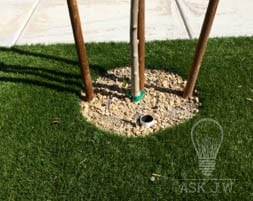
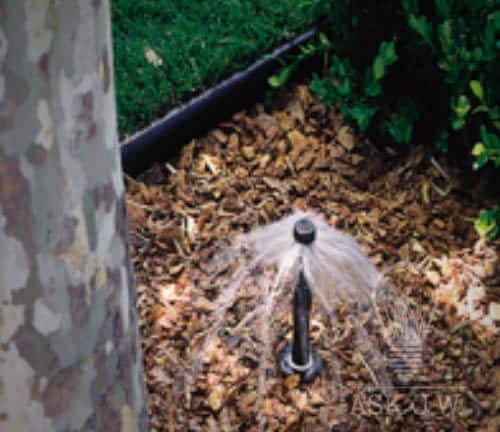
Since trees, plants and shrubs require carbon, hydrogen and oxygen from the air and water to survive, there is little turf installers can do to control how much of these plants receive. Installing synthetic turf directly up against a plant will diminish its chance of longevity and survival.
One of the best ways to protect the health of trees is to ensure that there is a constructed “Circle Well” around the base of each plant.
The “well circle” that is constructed around the plant provides a nice contrast to the surrounding synthetic turf, but most importantly, the well circle allows the plant to access vital nutrients for survival.
The additional space between the plant and the turf helps protect the plant, the inner bark, roots and flair near the soil line.
Constructing a raised well will also prevent water runoff and allow for deep penetration of the irrigated area. Mulching tree wells is also important for maintaining healthy vegetation. Mulch retains root moisture for trees, plants and bushes. The diameter of the mulched area surrounding the tree should extend as far as roots are visible.
When natural grass is removed and replaced with synthetic turf, trees, plants and bushes can fall within the “Synthetic Turf Zone.” This vegetation either is receiving water from its own irrigation system or feeding off the natural grass irrigation system. My recommendations are as follows:
1. I strongly recommend to cap all irrigation lines at the valves that connect to the existing natural grass irrigation. DO NOT USE SPRINKLER CAPS! Sprinkler caps only cover the heads of the natural grass sprinklers. If the irrigation valve is not capped, there is a chance that nails, spikes or staples may puncture the underlying irrigation lines which may be buried unseen to the naked eye. I have experienced contractors getting call backs three years later from the client stating there are leaks throughout the synthetic turf zone. Don’t take this chance!
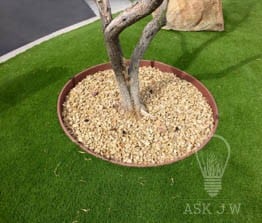
2. If there are trees, plants or bushes within the synthetic turf zone that were receiving water from the natural grass sprinklers, I recommend drawing out a new irrigation plan and installing new irrigation pipes or drip tubing. This will ensure that all workmen understand where the new irrigation lines are placed as well as prevent any irrigation damage caused by nails, spikes and staples that water the trees, plants and shrubs.
The drawing will also provide the contractor and homeowner future reference of the new irrigation’s location. These simple steps will allow for easy future repairs.
3. Synthetic Grass Warehouse Polyboard is a quick and great solution to create tree wells. When the natural grass is removed and irrigation is completed, prior to the placement of sub base materials, measure the SGW Polyboard at an even radius around the base of the tree. Excavate and bury the SGW Polyboard to proper elevation to complete a tree well. On larger trees, the well must extend to the “canopy”–also called the “drip edge,” which is where the feeder roots gain the most nutrients. The well must be made of good soil that will compact and allow the well to hold water without it breaking its circle.
Please note; if the constructed well is not installed with SGW Polyboard or SGW Wonder Edge, integrity of sub grade soils will erode and will allow the exterior nails, spikes or staples to come loose and the “circle well” will fail.
4. If SGW Polyboard or SGW Wonder Edge is not used, then a “berm” can be constructed to create a “circle well.” Build up the soil higher than the existing turf elevation to keep water and nutrients from running away from the trees, plants or shrubs.
Place the synthetic turf into the well approximately 8 inches. Use a tape measure and chalk and mark an even circle around the well. Trim excess turf off.
Use a claw hammer and excavate the interior of the well approximately 3 inches deep at the perimeter of the synthetic turf edge. Curl and tuck the synthetic turf into the soil with nails, spikes or staples to secure the edge.
Polyboard
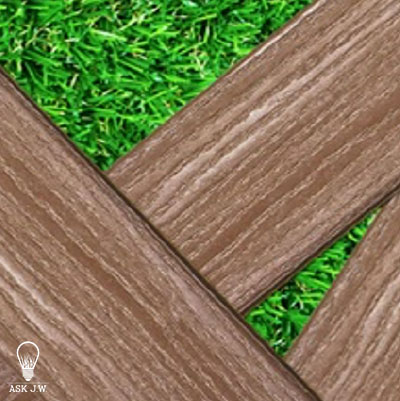
Durable plastic material stands the test of time
Pliability makes it ideal for a variety of projects
Strength withstands weather and the human element
Made with recycled plastic
Sold in strips of 1″ x 4″ x 20′
Made in the USA
Polyboard is a remarkable alternative to today’s lawn edging products. It is is quickly becoming the preferred product for landscape applications in both the home and commercial landscaping industries.
Benefits of Polyboard
- Look of redwood is an attractive feature for any project
- Lasts longer than other lawn edging products
- Waterproof
- Won’t rot, split or crack
- Thicker and stronger than other lawn edging products
- Resists damage caused by weed-whackers and lawn mowers
- Environmentally friendly
- Simplifies lawn maintenance
- Can be used multiple times for forming concrete walkways and patios
Pliable plastic material bends and conforms to a variety of shapes. Durability withstands multiple uses; very useful when forming concrete walkways and patios. Lasts longer than similar products made of wood. Polyboard is the most durable in lawn edging.
Tapered ends fit snugly together for a clean fit. Ends are strong and resist chipping and breakage.
Made from recycled materials for strength and environmental awareness. Sheds water and withstands damage caused by weed-whackers and lawn mowers. Material resembles beautiful redwood, but maintains the durability of plastic.
Installation is similar to installing other edging products, requiring tools such as edgers, shovel, spade, trowel, mallet, string, rake, etc.
Wonder Edge
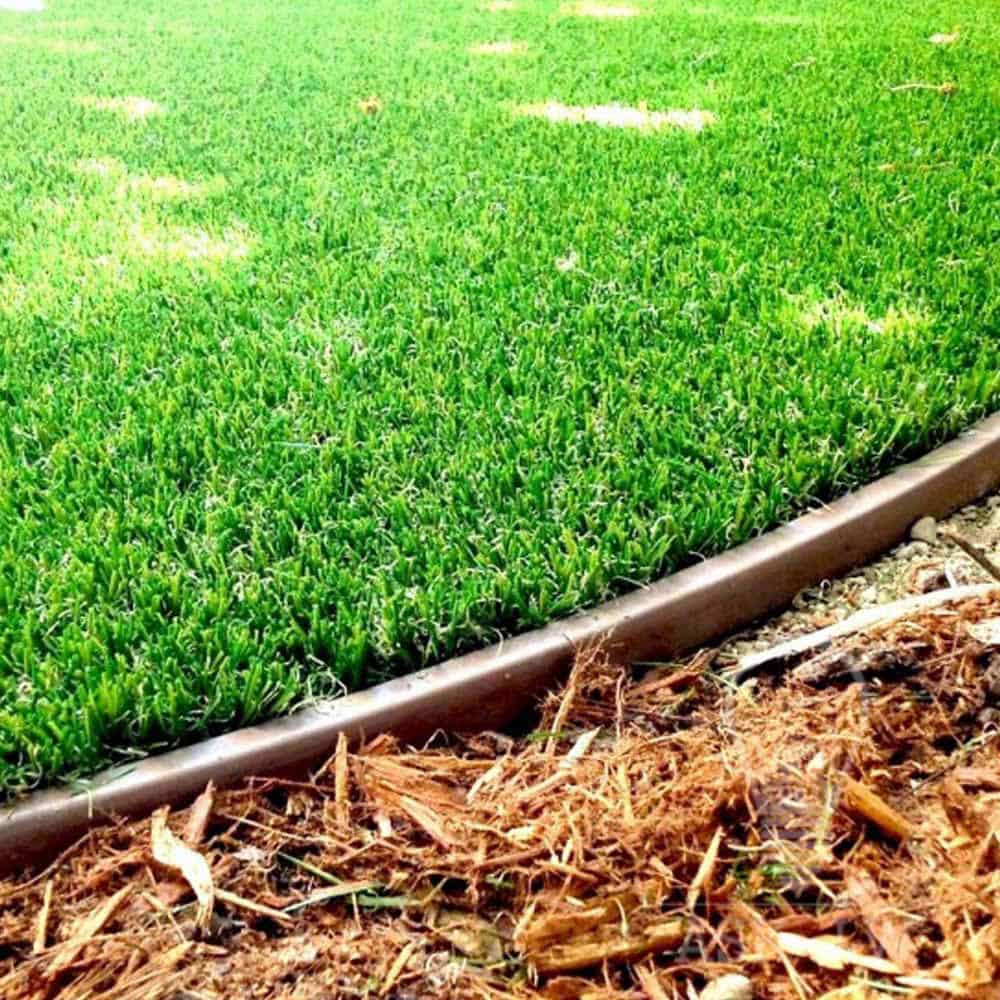
Want to make the install process simple and cut the time by 75 percent? Try Wonder Edge! This product is designed to create a smooth neat appearance for synthetic turf applications. After the installer compacts the base materials, apply the Wonder Edge product and then nail the turf to the product. Wonder Edge allows the installer to tuck the edge of the turf within the Wonder Edge’s borders.
Stay tuned for next month’s “Ask J.W.” installment! For more information or to contact J.W.: askjw@sgwcorp.com or call 888-846-3598


